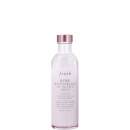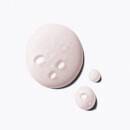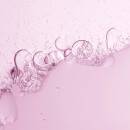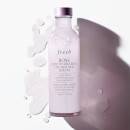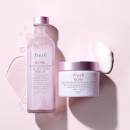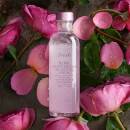rose deep hydration serum reviews
The fastest way to dewy skin: With a few shakes, two potent phases transform into a silky serum, balancing water and oil—to give thirsty skin exactly what it needs. With rosewater, damask rose, and lightweight nourishing oils, it deeply hydrates for 24 hours without a greasy finish.
Rose Deep Hydration Oil-Infused Serum
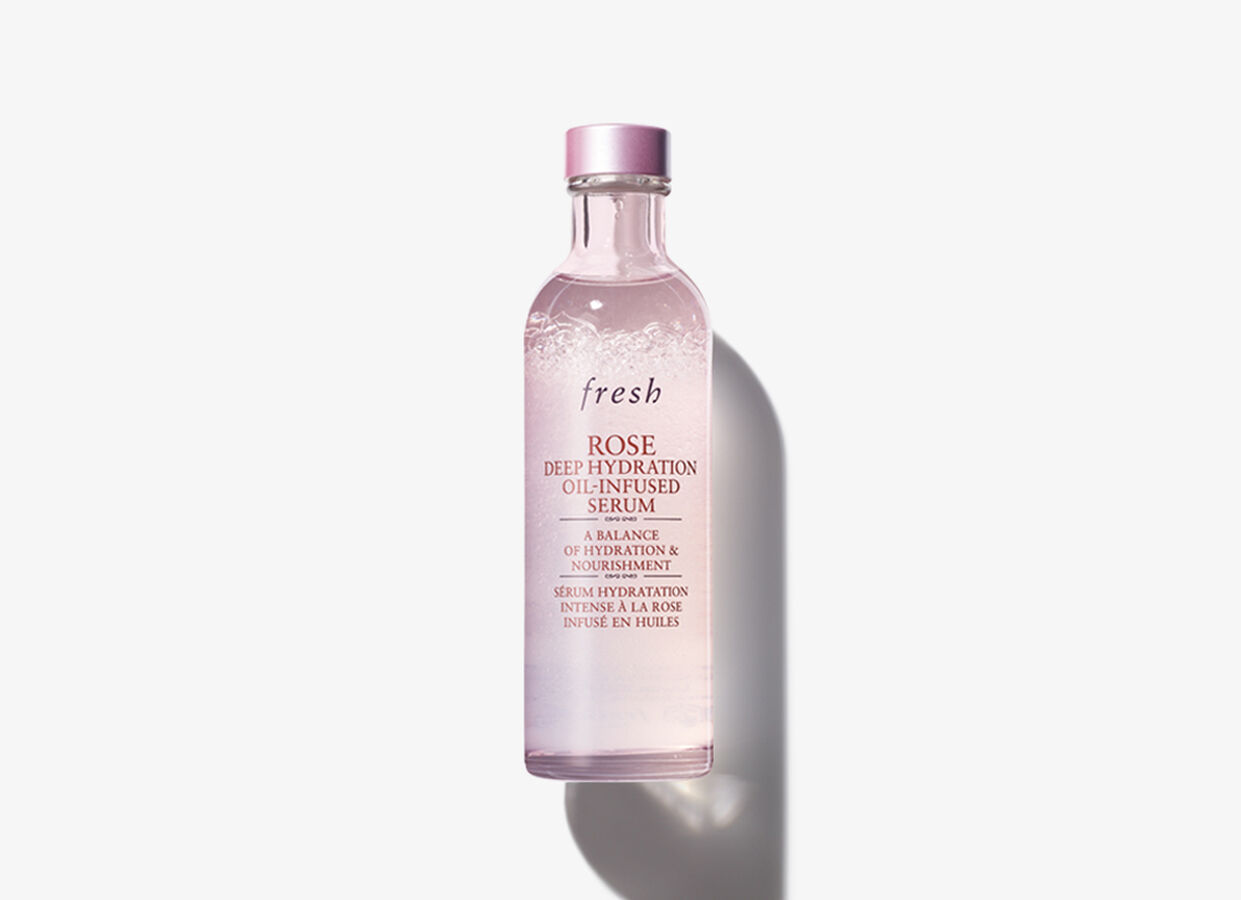
The fastest way to dewy skin: With a few shakes, two potent phases transform into a silky serum, balancing water and oil—to give thirsty skin exactly what it needs. With rosewater, damask rose, and lightweight nourishing oils, it deeply hydrates for 24 hours without a greasy finish.
- Delivers 24-hour deep hydration
- Nourishes and softens
- Reveals dewy skin plumped with moisture
Aqua (Water), Rosa Damascena Flower Water, Coco-Caprylate/Caprate, C9-12 Alkane, Propanediol, Ethylhexyl Palmitate, Pentylene Glycol, Glycerin, Squalane, Rosa Damascena Flower Extract, Rosa Damascena Extract, Camelina Sativa Seed Oil, Rosa Rubiginosa Seed Oil, Cucumis Sativus (Cucumber) Fruit Extract, Rosa Damascena Flower Oil, Tocopherol, Sodium Citrate, Sodium Chloride, Ethylhexylglycerin, Xanthan Gum, Citric Acid, Caprylic/Capric Tri-glyceride, Sorbitan Sesquioleate, 1,2- Hexanediol, Caprylyl Glycol, Sodium Benzoate, Potassium Sorbate, Citronellol, Geraniol.
Fresh Rose Deep Hydration Oil-Infused Serum 100ml
Launched in 1991 as an apothecary store curating upscale, natural beauty products from around the world, fresh has transformed the skin care industry with its pioneering use of natural ingredients from soy and sake to sugar. fresh marries world-leading, good-to-skin ingredients and centuries-old cultural beauty rituals to deliver sublime products – from bestselling lip balms to face masks to tackle a swathe of concerns – with mind-healing and skin-transforming results.
Introducing fresh’s first-ever oil-infused liquid serum, created to deliver both deep hydration and nourishment, for ultra-dewy skin that’s plumped with moisture.
With just a few shakes, fresh’s Rose Deep Hydration Oil-Infused Serum transforms from two potent phases into a silky serum, balancing water and oil to give parched pores exactly what it needs. Brimming with rosewater and damask rose to soothe and hydrate as well as lightweight nourishing oils (read: rose flower, camelina, rosehip, and squalane) that immediately nourish, soften, protect and moisturise, this multi-tasking serum deeply hydrates for up to 24 hours without a greasy finish in sight.
Shake well to mix the water and oil phases, and lightly pat onto face with palms. For a dewy, no-make up look, use alone or before moisturiser. Use daily, morning and night.
Aqua (Water), Rosa Damascena Flower Water, Coco-Caprylate/Caprate, C9-12 Alkane, Propanediol, Ethylhexyl Palmitate, Pentylene Glycol, Glycerin, Squalane, Rosa Damascena Flower Extract, Rosa Damascena Extract, Camelina Sativa Seed Oil, Rosa Rubiginosa Seed Oil, Cucumis Sativus (Cucumber) Fruit Extract, Rosa Damascena Flower Oil, Tocopherol, Sodium Citrate, Sodium Chloride, Ethylhexylglycerin, Xanthan Gum, Citric Acid, Caprylic/Capric Tri-glyceride, Sorbitan Sesquioleate, 1,2- Hexanediol, Caprylyl Glycol, Sodium Benzoate, Potassium Sorbate, Citronellol, Geraniol.
Fresh product ingredient listings are updated periodically. Before using a fresh product, please read the ingredient list on the packaging of your product to be sure that the ingredients are appropriate for your personal use.
So this is described as a serum, but I have been loving using it like an essence or lotion, pressed onto clean skin, before a serum.
My Review & How to Use It
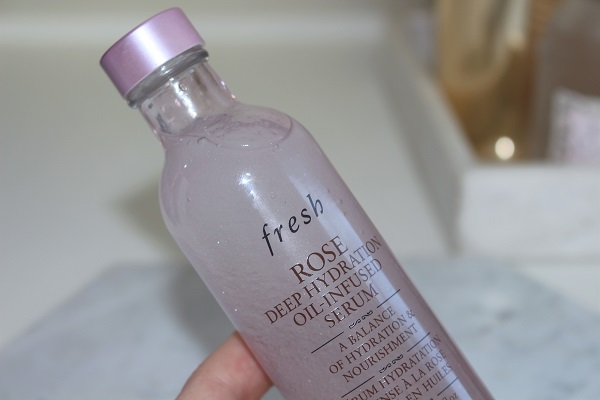
Fresh Rose Deep Hydration Oil Infused Serum
The gorgeous light serum is designed to be used on clean skin after cleansing and toning. You simply shake up the bottle, put a few drops into the palms of your hands and then gently press it into the skin. It instantly gives the skin a gorgeous juicy glow and plumps everything up.
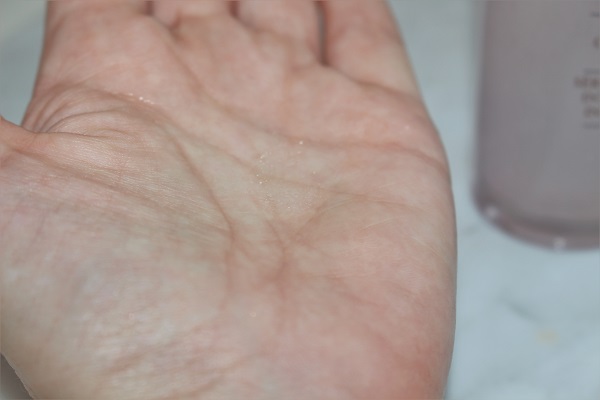
It feels so light and smells absolutely gorgeous. Really it’s a joy to use. You can then go straight ahead and apply your day or night cream, although as I said at the top, it also works really well under a regular serum for a super-boost of hydration. You only need a really small amount so the bottle will last a long time.
Makeup Refresh Hack
Another way I have been absolutely loving use it is as a glow-booster during the day over makeup.
I just pop a couple of drops into cleans hand, warm up the product in my palms, and then press it over my skin, being careful not to rub if I am wearing makeup. It literally transports you back to the point where you just did your skincare and put fresh makeup on!! I simply add a bit of concealer (if I want to) and it looks like I have re-done my makeup. Love it!
Sign up to our complimentary loyalty programme, NDULGE and make shopping with us even more rewarding.
Email when available
Thanks! You will be notified.
Sign up to our complimentary loyalty programme, NDULGE and make shopping with us even more rewarding.
- Earn 1 point for every €1.15 you spend
- For every 100 points earned, receive a €11.50 reward to spend on your next purchase (in-store and online)
- As part of our community you’ll enjoy exclusive privileges such as a birthday gift every year and event invitations. Plus, enjoy unlimited double points in your first month.
Description
Encourage a luminous complexion with the potent formulation of Fresh Rose Oil-Infused Serum, a two-phase skincare treatment infused with nourishing oils that help to hydrate and encourage plumper, smoother looking skin.
This fast-absorbing, lightweight serum contains a precise balance of oil and water for all skin types that blends easily with a few shakes and transforms into a silky serum. The rosewater helps to soothe and hydrate the skin, contributing to a balanced, soothed complexion. Additionally, a blend of skin-friendly oils, including rose flower, camelina, rosehip and squalene, work to immediately nourish and soften the skin.
Use after cleansing and toning to help skin appear supple, dewy and luminous.
Key Benefits
- Two-phase serum activated by shaking layers together
- Contains rosewater and rose flower extracts
- Rosewater helps to calm and soothe
- Hydrating damask rose extract helps to smooth the skin
- Encourages a glowing complexion
ingredients
AQUA (WATER), ROSA DAMASCENA FLOWER WATER, COCO-CAPRYLATE/CAPRATE, C9-12 ALKANE, PROPANEDIOL, ETHYLHEXYL PALMITATE, PENTYLENE GLYCOL, GLYCERIN, SQUALANE, ROSA DAMASCENA FLOWER EXTRACT, ROSA DAMASCENA EXTRACT, CAMELINA SATIVA SEED OIL, ROSA RUBIGINOSA SEED OIL, CUCUMIS SATIVUS (CUCUMBER) FRUIT EXTRACT, ROSA DAMASCENA FLOWER OIL, TOCOPHEROL, SODIUM CITRATE, SODIUM CHLORIDE, ETHYLHEXYLGLYCERIN, XANTHAN GUM, CITRIC ACID, CAPRYLIC/CAPRIC TRI-GLYCERIDE, SORBITAN SESQUIOLEATE, 1,2- HEXANEDIOL, CAPRYLYL GLYCOL, SODIUM BENZOATE, POTASSIUM SORBATE, CITRONELLOL, GERANIOL
FRESH PRODUCT INGREDIENT LISTINGS ARE UPDATED PERIODICALLY. BEFORE USING A FRESH PRODUCT, PLEASE READ THE INGREDIENT LIST ON THE PACKAGING OF YOUR PRODUCT TO BE SURE THAT THE INGREDIENTS ARE APPROPRIATE FOR YOUR PERSONAL USE.
Biosaccharide Gum-1 is a pretty interesting kind of sugar ingredient that is created from sorbitol via bacterial fermentation.
Rose deep hydration serum reviews
Good old water, aka H2O. The most common skincare ingredient of all. You can usually find it right in the very first spot of the ingredient list, meaning it’s the biggest thing out of all the stuff that makes up the product.
It’s mainly a solvent for ingredients that do not like to dissolve in oils but rather in water.
Expand to read more
Once inside the skin, it hydrates, but not from the outside – putting pure water on the skin (hello long baths!) is drying.
One more thing: the water used in cosmetics is purified and deionized (it means that almost all of the mineral ions inside it is removed). Like this, the products can stay more stable over time.
- A natural moisturizer that’s also in our skin
- A super common, safe, effective and cheap molecule used for more than 50 years
- Not only a simple moisturizer but knows much more: keeps the skin lipids between our skin cells in a healthy (liquid crystal) state, protects against irritation, helps to restore barrier
- Effective from as low as 3% with even more benefits at higher concentrations up to 20-40% (around 10% is a good usability-effectiveness sweet spot)
- High-glycerin moisturizers are awesome for treating severely dry skin
Propanediol is a natural alternative for the often used and often bad-mouthed propylene glycol. It's produced sustainably from corn sugar and it's Ecocert approved.
It's quite a multi-tasker: can be used to improve skin moisturization, as a solvent, to boost preservative efficacy or to influence the sensory properties of the end formula.
We don’t have description for this ingredient yet.
Butylene glycol, or let’s just call it BG, is a multi-tasking colorless, syrupy liquid. It’s a great pick for creating a nice feeling product.
BG’s main job is usually to be a solvent for the other ingredients. Other tasks include helping the product to absorb faster and deeper into the skin (penetration enhancer), making the product spread nicely over the skin (slip agent), and attracting water (humectant) into the skin.
Expand to read more
It’s an ingredient whose safety hasn’t been questioned so far by anyone (at least not that we know about). BG is approved by Ecocert and is also used enthusiastically in natural products. BTW, it’s also a food additive.
A spherical texturizing powder that's used as a texture enhancer and soft focus agent. It's claimed to give silicone type softness to the formula and also works as a (temporary) wrinkle filler.
Probably the most common silicone of all. It is a polymer (created from repeating subunits) molecule and has different molecular weight and thus different viscosity versions from water-light to thick liquid.
As for skincare, it makes the skin silky smooth, creates a subtle gloss and forms a protective barrier (aka occlusive). Also, works well to fill in fine lines and wrinkles and give skin a plump look (of course that is only temporary, but still, it's nice). There are also scar treatment gels out there using dimethicone as their base ingredient. It helps to soften scars and increase their elasticity.
Expand to read more
As for hair care, it is a non-volatile silicone meaning that it stays on the hair rather than evaporates from it and smoothes the hair like no other thing. Depending on your hair type, it can be a bit difficult to wash out and might cause some build-up (btw, this is not true to all silicones, only the non-volatile types).
A multi-functional, silky feeling helper ingredient that can do quite many things. It's used as an emulsion stabilizer, solvent and a broad spectrum antimicrobial. According to manufacturer info, it's also a moisturizer and helps to make the product feel great on the skin. It works synergistically with preservatives and helps to improve water-resistance of sunscreens.
We don’t have description for this ingredient yet.
We don’t have description for this ingredient yet.
The flower water coming from the flowers of the Damask Rose. In general, flower waters (also called hydrosols) are diluted versions of essential oils coming from the same plant. They contain the same components but in much-reduced concentrations.
Similar to its big sister, rose oil, rose water also has a lovely, relaxing scent. It contains some antioxidant and antimicrobial compounds, as well as some fragrant components.
Expand to read more
If your skin is super sensitive, it is a good idea to choose products without fragrant floral waters.
We don’t have description for this ingredient yet.
We don’t have description for this ingredient yet.
Cucumber is a nice, non-irritating plant extract that’s known for it’s soothing and emollient properties. It’s not something new to put it on our face: even Cleopatra used it to “preserve her skin”.
It’s commonly believed that cucumber is the answer to puffy eyes, but there is no research confirming this. What research does confirm is that it contains amino acids and organic acids that’s helpful for the skin’s acid mantle. There is also an enzyme (called shikimate dehydrigenase) in the pulp that’s shown to have anti-inflammatory properties.
We are big fans of all kinds of roses as ornamental plants but when it comes to skincare, it is a mixed bag. Before we list out the good and the not so good, here is an interesting thing.
The oil content in rose is very, very low so distilling rose essential oil requires huge amounts of rose flowers. It has such a wonderful scent that there are no comparable synthetic alternatives. You can probably guess that this means rose essential oil is expensive. very very expensive.
Expand to read more
So the good things: thanks to its wonderful scent the high-end perfume industry loves rose oil. Also, we (humans :)) love rose oil. We love its scent so much that it can heal headaches, depression, stress, and even grief.
Rose oil contains more than 95 compounds, among them flavonoids, anthocyanins, vitamin C, and quercetin that are all known for their medicinal properties and great antioxidant effects. Similar to many other essential oils, it has antimicrobial properties too.
Now, the not-so-good thing? Out of the 95 compounds, the major ones are citronellol and geraniol, fragrant components that might irritate sensitive skin.
It’s the – sodium form – cousin of the famous NMF, hyaluronic acid (HA). If HA does not tell you anything we have a super detailed, geeky explanation about it here. The TL; DR version of HA is that it's a huge polymer (big molecule from repeated subunits) found in the skin that acts as a sponge helping the skin to hold onto water, being plump and elastic. HA is famous for its crazy water holding capacity as it can bind up to 1000 times its own weight in water.
As far as skincare goes, sodium hyaluronate and hyaluronic acid are pretty much the same and the two names are used interchangeably. As cosmetic chemist kindofstephen writes on reddit "sodium hyaluronate disassociates into hyaluronic acid molecule and a sodium atom in solution".
Expand to read more
In spite of this, if you search for "hyaluronic acid vs sodium hyaluronate" you will find on multiple places that sodium hyaluronate is smaller and can penetrate the skin better. Chemically, this is definitely not true, as the two forms are almost the same, both are polymers and the subunits can be repeated in both forms as much as you like. (We also checked Prospector for sodium hyaluronate versions actually used in cosmetic products and found that the most common molecular weight was 1.5-1.8 million Da that absolutely counts as high molecular weight).
What seems to be a true difference, though, is that the salt form is more stable, easier to formulate and cheaper so it pops up more often on the ingredient lists.
If you wanna become a real HA-and-the-skin expert you can read way more about the topic at hyaluronic acid (including penetration-questions, differences between high and low molecular weight versions and a bunch of references to scientific literature).
It’s the most commonly used version of pure vitamin E in cosmetics. You can read all about the pure form here. This one is the so-called esterified version.
According to famous dermatologist, Leslie Baumann while tocopheryl acetate is more stable and has a longer shelf life, it’s also more poorly absorbed by the skin and may not have the same awesome photoprotective effects as pure Vit E.
A clear, light yellow water-loving oil that comes from coconut/palm kernel oil and glycerin. It's a mild cleansing agent popular in baby washes and sensitive skin formulas.
It's also a so-called solubilizer that helps to dissolve oils and oil-soluble ingredients (e.g.essential oils or salicylic acid) in water-based formulas.
A clear viscous polymer (a molecule from repeated subunits) liquid that works as a solvent and humectant.
According to manufacturer info, it's recommended for all kinds of washing products (like hand dishwashing detergents or fine-fabric washing powders) and is ideal as a viscosity regulator, detergent booster, and solubilizer.
It's one of the most commonly used thickeners and emulsion stabilizers. If the product is too runny, a little xanthan gum will make it more gel-like. Used alone, it can make the formula sticky and it is a good team player so it is usually combined with other thickeners and so-called rheology modifiers (helper ingredients that adjust the flow and thus the feel of the formula). The typical use level of Xantha Gum is below 1%, it is usually in the 0.1-0.5% range.
Btw, Xanthan gum is all natural, a chain of sugar molecules (polysaccharide) produced from individual sugar molecules (glucose and sucrose) via fermentation. It’s approved by Ecocert and also used in the food industry (E415).
Though its long name does not reveal it, this polymer molecule (big molecule from repeated subunits or monomers) is a relative to the super common, water-loving thickener, Carbomer. Both of them are big molecules that contain acrylic acid units, but Acrylates/C10-30 Alkyl Acrylate Crosspolymer also contains some other monomers that are hydrophobic, i.e. water-hating.
This means that our molecule is part water- and part oil-loving, so it not only works as a thickener but also as an emulsion stabilizer. It is very common in gel-type formulas that also contain an oil-phase as well as in cleansers as it also works with most cleansing agents (unlike a lot of other thickeners).
It's a film-forming and thickening polymer (a large molecule composed of many repeated subunits) that comes to the formula usually as part of an emulsifier, thickener trio (with C13-14 Isoparaffin and Laureth-7, trade named Sepigel 305). This trio is an easy-to-use liquid that helps to create nice, non-tacky gel formulas.
It's a little helper ingredient that helps to set the pH of the products to be right. It has an alkaline pH and can neutralize acidic ingredients.
It's a petroleum derived emollient and thickener. It often comes to the formula as part of an emulsifier, thickener trio (with Polyacrylamide and Laureth-7). This trio is an easy-to-use liquid that helps to create nice, non-tacky gel formulas.
We don’t have description for this ingredient yet.
A helper ingredient that usually comes to the formula coupled with PEG-40 Hydrogenated Castor Oil. The two together work as surfactants and oil solubilizers. It's a non-sticky duo that works at low concentration and is often used to solubilize fragrance components into water-based formulas.
We don’t have description for this ingredient yet.
A handy helper ingredient that helps products to remain nice and stable for a longer time. It does so by neutralizing the metal ions in the formula (that usually get into there from water) that would otherwise cause some not so nice changes.
A super common emollient that makes your skin feel nice and smooth. It comes from coconut oil and glycerin, it’s light-textured, clear, odorless and non-greasy. It’s a nice ingredient that just feels good on the skin, is super well tolerated by every skin type and easy to formulate with. No wonder it’s popular.
A mildly viscous, amber-colored liquid with fatty odor, made from Castor Oil and polyethylene glycol (PEG).
If it were a person, we’d say, it’s agile, diligent & multifunctional. It’s mostly used as an emulsifier and surfactant but most often it is used to solubilize fragrances into water-based formulas.
Biosaccharide Gum-1 is a pretty interesting kind of sugar ingredient that is created from sorbitol via bacterial fermentation.
According to the manufacturer it’s a “S.M.A.R.T.” sugar: it has Soothing, Moisturizing, Anti-aging, Restructuring and Touch properties. Let’s look at them quickly one by one.
Expand to read more
Soothing: the manufacturer tested out the soothing effect in vivo (meaning on humans that is always a good thing!) by measuring how 3% Biosaccharide Gum-1 decreased the tingling sensation caused by 10% lactic acid. The result was good: the tingling was decreased by 47%.
Moisturizing: Compared to famous hyaluronic acid, it turns out that the two are great together. HA has a quicker effect and provides more instant hydration (much more hydration was measured after 1h of application), while our nice sugar has a somewhat delayed effect demonstrating stronger hydration after 3h of application. After 8 hours both had similar moisturizing effect.
Anti-aging: According to ex-vivo tests (meaning not on humans, so do not trust it too much) Biosaccharide Gum-1 can stimulate a protein in our skin called sirtuin-1. This is supposed to help our skin cells to live longer, and function better.
Resurfacing: The sirtuin-1 stimulation also results in quicker cell renewal – something that happens anyway but slows down as we age. And the quicker cell renewal is good because it helps the regeneration of the barrier function. That is especially nice for fragile, sensitive skin.
Touch: our fermented sugar is not only good to the skin, but it also feels great on the skin. It gives a nice “soft touch” feeling and makes the products pleasant to use.
The bottom line is that the above info is from the manufacturer (and we could not find any relevant independent research) so obviously take it with a grain of salt. But Biosaccharide Gum-1 does look as an interesting and promising ingredient that’s why it earned our goodie rating.
A not-very-interesting helper ingredient that is used as an emulsifier and/or surfactant. Comes from a coconut oil derived fatty alcohol, lauryl alcohol.
Citric acid comes from citrus fruits and is an AHA. If these magic three letters don’t tell you anything, click here and read our detailed description on glycolic acid, the most famous AHA.
So citric acid is an exfoliant, that can – just like other AHAs – gently lift off the dead skin cells of your skin and make it more smooth and fresh.
Expand to read more
There is also some research showing that citric acid with regular use (think three months and 20% concentration) can help sun-damaged skin, increase skin thickness and some nice hydrating things called glycosaminoglycans in the skin.
But according to a comparative study done in 1995, citric acid has less skin improving magic properties than glycolic or lactic acid. Probably that’s why citric acid is usually not used as an exfoliant but more as a helper ingredient in small amounts to adjust the pH of a formulation.
The caramel in cosmetics is pretty much the same one that you know from the kitchen. It is derived by controlled heat treatment of food-grade carbohydrates (sugars) and works as a brown colorant.
Exactly what it sounds: nice smelling stuff put into cosmetic products so that the end product also smells nice. Fragrance in the US and parfum in the EU is a generic term on the ingredient list that is made up of 30 to 50 chemicals on average (but it can have as much as 200 components!).
If you are someone who likes to know what you put on your face then fragrance is not your best friend – there's no way to know what’s really in it.
Expand to read more
Also, if your skin is sensitive, fragrance is again not your best friend. It’s the number one cause of contact allergy to cosmetics. It’s definitely a smart thing to avoid with sensitive skin (and fragrance of any type – natural is just as allergic as synthetic, if not worse!).
It's the acronym for Butylated Hydroxy Toluene. It's a common synthetic antioxidant that's used as a preservative.
There is some controversy around BHT. It's not a new ingredient, it has been used both as a food and cosmetics additive since the 1970s. Plenty of studies tried to examine if it's a carcinogen or not. This Truth in Aging article details the situation and also writes that all these studies examine BHT when taken orally.
Expand to read more
As for cosmetics, the CIR (Cosmetic Ingredient Review) concluded that the amount of BHT used in cosmetic products is low (usually around 0.01-0.1%), it does not penetrate skin far enough to be absorbed into the bloodstream and it is safe to use in cosmetics.
It’s pretty much the current IT-preservative. It’s safe and gentle, but even more importantly, it’s not a feared-by-everyone-mostly-without-scientific-reason paraben.
It’s not something new: it was introduced around 1950 and today it can be used up to 1% worldwide. It can be found in nature – in green tea – but the version used in cosmetics is synthetic.
Expand to read more
Other than having a good safety profile and being quite gentle to the skin it has some other advantages too. It can be used in many types of formulations as it has great thermal stability (can be heated up to 85°C) and works on a wide range of pH levels (ph 3-10).
It’s often used together with ethylhexylglycerin as it nicely improves the preservative activity of phenoxyethanol.
Citronellol is a very common fragrance ingredient with a nice rose-like odor. In the UK, it’s actually the third most often listed perfume on the ingredient lists.
It can be naturally found in geranium oil (about 30%) or rose oil (about 25%).
Expand to read more
As with all fragrance ingredients, citronellol can also cause allergic contact dermatitis and should be avoided if you have perfume allergy. In a 2001 worldwide study with 178 people with known sensitization to fragrances citronellol tested positive in 5.6% of the cases.
There is no known anti-aging or positive skin benefits of the ingredient. It’s in our products to make it smell nice.
Geraniol is a common fragrance ingredient. It smells like rose and can be found in rose oil or in small quantities in geranium, lemon and many other essential oils.
Just like other similar fragrance ingredients (like linalool and limonene) geraniol also oxidises on air exposure and becomes allergenic. Best to avoid if you have sensitive skin.
